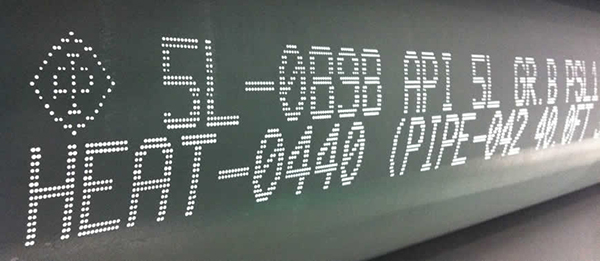Seamless Carbon Steel Pipe API 5L PSL1 & PSL2

Seamless Carbon Steel Pipe API 5L PSL1 & PSL2
ASTM Scope:
This Standard specifies requirements for the manufacture of two product specification levels (PSL1 and PSL2) of steel pipes for use in pipeline transportation systems in the petroleum and natural gas industries. This Standard is not applicable to cast pipe.
Product Knowledge:
This API specification is written so that the end user and the manufacturer can agree upon, and clearly understand, the properties and capabilities of the piping product being supplied. This specification is considered a national code, and is often stipulated as a national or state-level legal requirement, especially in the United States and in international waters or other countries where the projects are funded or insured by USA-based organizations.
API 5L also requires a monogram license for Manufacturer, and it maintains the Composite Index of approved Manufacturer. This means that, at the request of a potential manufacturer, API will send auditors to the mill to ensure that they have the capability to meet the requirements of the standard. This would be similar to a franchise, but API has no financial benefit from the mill, and does not accept any liability for the actions of the mill or the performance of the product.
API 5L does not have its own table of pipe dimensions. Rather, like the ASTM standards, it reverts to ASME B36.10 for the nominal pipe dimensions. Therefore, API 5L pipe products are often multi-certified to similar ASTM A53, A106 and A333 grades, where the requirements of all these specifications are met.
Rather than “re-invent the wheel”, ASME has recognized the widespread availability of API 5L product, and has adopted these grades for use in pressure piping (B31.X) applications. Note that API 5L piping products are not acceptable for use in ASME BPVC pressure vessels, unless they exceed the requirements of the engineering design and are approved by the local pressure vessel authority (just like for any other unlisted pipe specification).
In the API 5L specification, there are requirements for BOTH non-destructive testing and hydrotesting. Because this spec is often a legal requirement, neither the end-user nor the manufacturer is permitted to waive these requirements.
Special Annexes in API 5L further clarify requirements for sour service and off-shore applications.
The API 5L specification is generally more clear about the limits on dimensional deviations (end squareness, straightness of pipe, hockey-stick pipe, flared pipes), whereas the ASTM standards are more vague. As a result, the API 5L requirements are generally considered the basis for the mill tolerances, whether or not the API 5L spec was stated in the purchase order to the mill.
In the past, the API 5L spec was harmonized (published together) with ISO 3183. Due to world politics, the two agencies parted ways and the specs are no longer published together. Because the two document development committees share several common members, there has continued to be an undocumented harmonization of the two standards, so products can generally be multi-certified.